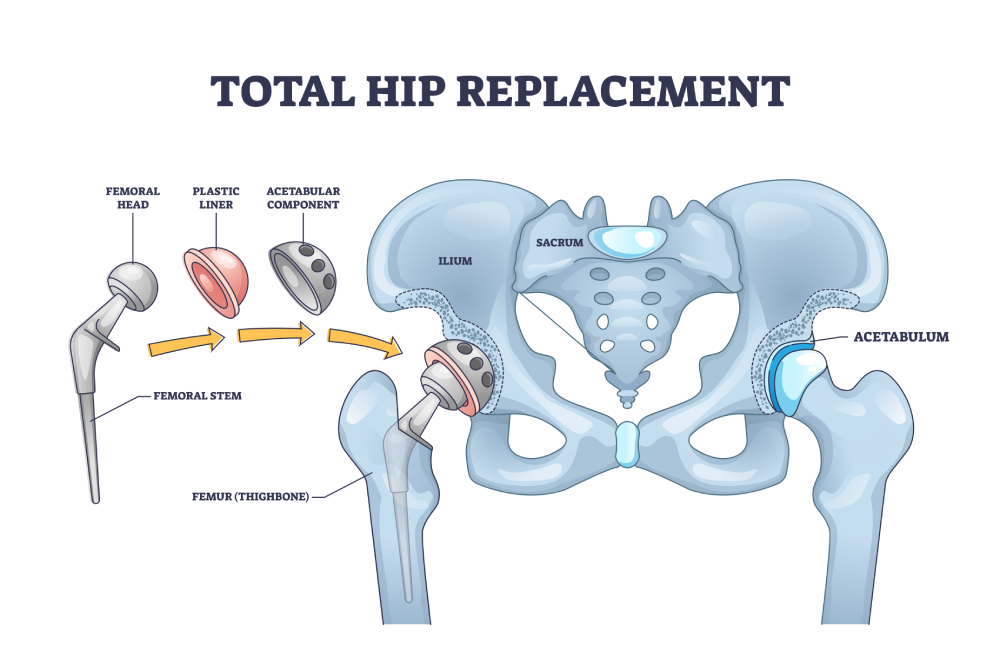Hip Joint Replacement
Hip joint replacement is surgery to replace all or part of the hip joint with a man-made joint. The artificial joint is called a prosthesis.
The most common reason to have a hip joint replacement is to relieve severe arthritis pain that is limiting your activities. Most of the time, hip joint replacement is done in people age 60 and older, but many people who have this surgery are younger. Younger people who have a hip replaced may put extra stress on the artificial hip. That extra stress can cause it to wear out earlier than in older patients. Part or all of the joint may need to be replaced again if that happens.
Your doctor may recommend a hip joint replacement if you're experiencing any of these problems:
- You can't sleep through the night because of hip pain
- Your hip pain has not gotten better with other treatments
- Hip pain limits or prevents you from doing your normal activities, such as bathing, preparing meals, doing household chores, and walking
- You have problems walking that require you to use a cane or walker
Hip Joint Description
Your hip joint is made up of two major parts. One or both parts may be replaced during surgery:
The hip socket (a part of the pelvic bone called the acetabulum)
The upper end of the thighbone (called the femoral head)
The new hip joint replacement is made up of:
- A socket, which is usually made of strong metal.
- A liner, which fits inside the socket. It is usually plastic, but some surgeons are now trying other materials, like ceramic. The liner allows the hip to move smoothly.
- A metal or ceramic ball that will replace the round head (top) of your thigh bone.
- A metal stem that is attached to the thigh bone to make the joint more stable.

Hip Joint Replacement: Procedure
After you receive anesthesia, your surgeon will make a surgical cut to open up your hip joint. Often this cut is over the buttocks.
Your surgeon will then:
- Cut and remove the head of your thigh bone
- Clean out your hip socket and remove the rest of the cartilage and damaged or arthritic bone
- Put the new hip socket in place, then insert the metal stem into your thigh bone
- Place the correct-sized ball for the new joint
- Secure all of the new parts in place, sometimes with a special cement
- Repair the muscles and tendons around the new joint
- Close the surgical wound
Hip Joint Replacement: After the Procedure
You will recover from anesthesia, we will ensure your pain is controlled and you will be up with assistance walking the day of surgery. Therapy will evaluate you for a safe discharge plan.
Many people are able to discharge to home on day of surgery. If therapy or a care team member identifies any needs to assist you in safely transitioning to home, a TriHealth Care Manager will be available to coordinate any needed services. These can include walkers, or other assistive equipment, and home care services.
Joint Replacement Class 513 865 1340
Joint Replacement Class 513 862 2775
